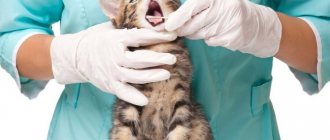Toxoplasmosis is a human disease caused by the microscopic single-celled parasite Toxoplasma gondii. It has a wide variety of clinical manifestations, mainly affecting:
- Nervous system.
- Eyes.
- Skeletal and cardiac muscles.
- Lymphatic system.
The pathogen is very common in nature; it is carried by several hundred species of animals and birds, including domestic ones. The parasite easily penetrates the body, but often does not lead to the development of an acute infection. The disease usually develops in people with a reduced immune response - patients with AIDS and other immunodeficiency conditions, when taking immunosuppressants.
Pathogens of the disease, its sources
The most dangerous is intrauterine infection, which often ends in miscarriage or severe congenital pathologies. For this reason, testing for toxoplasmosis must be carried out in preparation for pregnancy and bearing a child.
According to statistics, toxoplasma is found in 25-80% of the world's population. In some regions, the infection rate reaches 95%.
Toxoplasma is an intracellular parasitic organism that can exist in three forms:
- Tachyozoites. They have a crescent shape and a size of 2-4 microns. A characteristic feature is that with special staining (Romanovsky-Giemsa), the nucleus becomes red, and the cytoplasm becomes blue-gray. In this form, the parasite penetrates the cells of the immune system (macrophages, phagocytes), in which it quickly multiplies. After cell death, tachyozoites are released and infect healthy macrophages.
- Bradiozoites (pseudocysts). This is a protective form of Toxoplasma, in which most of the life activity of the pathogen occurs during a normal immune reaction on the part of the infected organism. The shape of the bradiozoite cell is elongated, the nucleus is displaced towards one of the ends. Toxoplasma in this form often forms tissue pseudocysts consisting of many parasitic cells covered with a common protective membrane.
- Oocysts. This form of Toxoplasma is found only in the intestinal epithelial cells of the domestic cat and its wild relatives. Formed as a result of sexual reproduction of the parasite inside the cells of the animal. The immature oocysts are then released into the environment in feces. Given sufficient temperature and an influx of fresh oxygen, the oocysts mature within 2-7 days. After maturation is completed, oocysts become capable of infecting intermediate hosts of Toxoplasma, including humans.
The main source of infection is representatives of the cat family, the overwhelming majority being domestic cats. The mechanism of transmission of the parasite is fecal-oral. Implemented through:
- Consumption of insufficiently thermally processed meat products (especially pork and lamb).
- Through poorly washed vegetables, herbs, fruits.
- Failure to comply with personal hygiene rules (unwashed hands).
Rarely, direct infection with Toxoplasma through microdamage to the skin is possible. The parasite is rarely transmitted from mother to child. On average, one infection per 2-3.5 thousand pregnant women. It is most likely that the fetus will become infected with Toxoplasma if during pregnancy the pregnant woman’s body encounters the parasite for the first time.
Susceptibility to Toxoplasma is extremely high; single oocysts are sufficient for infection. Young people are most susceptible; in older people (after 60 years), the parasite is detected much less frequently.
Useful video
To learn about what tests cat owners need to take, watch this video:
Similar articles
- The cat is sneezing: what should the owners do?
| Why does a cat sneeze However, if this physiological process in a cat becomes regular, the owner needs to address... Helminthic infestations: toxoplasmosis, dirofilariasis. Read more - A cat has diarrhea: what to do, how to treat it and what to give if...
…including information about a dangerous disease for humans – toxoplasmosis. ... Without following a starvation diet, it is almost impossible to cure diarrhea in a cat. Read more
- A cat gave birth to dead kittens: what should owners do?
...(chlamydia, listeriosis, toxoplasmosis, herpes, panleukopenia, etc.) is a common reason why a cat gave birth to dead kittens. Read more
- Peritonitis in cats (viral, infectious, dry...)
The many faces of peritonitis in cats: how to recognize and help your pet? ... first of all, from ascites, cardiovascular pathologies, toxoplasmosis, injuries, tumors... Read more
- Miscarriage in a cat: what to do, why it appeared...
Spontaneous abortion in cats is also dangerous for humans, since there is a possible risk of infection with toxoplasmosis and coxiellosis (Q fever). Read more
Acquired toxoplasmosis, symptoms
The majority of those infected have no obvious clinical symptoms; the disease immediately enters the latent carrier phase. The incubation period ranges from 1 to 3 weeks.
When a pronounced clinical picture appears, the symptoms increase slowly. Usually the disease begins asymptomatically with enlargement of regional lymph nodes (inguinal, axillary, cervical). Lymph nodes are elastic, painless, patients do not show any complaints during this period.
Then the body temperature rises to 38-39 degrees, headaches appear, and symptoms of acute gastroenteritis develop. In particularly severe cases of toxoplasmosis, fever begins suddenly, and body temperature can rise to 40 degrees or more. Intense sweating, severe intoxication, abdominal pain and macular rash are observed.
After the first week of development of the infectious process, the spleen and liver become enlarged. Aching pain may occur in large muscle groups of the lower and upper extremities. Every fifth person develops chorioretinitis during this period, which manifests itself in loss of areas of the visual field.
Starting from the second week, the symptoms of gastrointestinal tract damage begin to fade. Symptoms of enteritis decrease and quickly disappear, and overall intoxication of the body decreases. At the same time, the lesion develops:
- Musculoskeletal system. Pain in the limbs and joints increases, and mobility and fine motor skills may be impaired.
- Reticuloendothelial. Manifests itself as hepatolienal syndrome, mesadenitis.
- Cardiovascular. Heart rhythm disturbances and symptoms of myocarditis or pericarditis often develop.
At 3-4 weeks, the disease ends with the attenuation of all manifestations and the transition of toxoplasmosis to asymptomatic carriage. When exposed to negative factors that weaken the immune system, the disease may manifest with the development of the above-described clinical picture, which again enters the latent phase.
Frequent relapses of acute toxoplasmosis, especially against the background of immunosuppressive factors, can lead to serious complications. More common:
- Myocardial dystrophy.
- Psychoneurological pathologies.
- Decrease in intelligence.
- Atrophy of the optic nerve up to complete blindness.
- Chronic fatigue syndrome.
Acute toxoplasmosis in women can lead to menstrual irregularities, miscarriages and other pathologies of the reproductive system.
Chronic acquired toxoplasmosis is a fairly rare phenomenon and is considered an AIDS-associated form of the disease. It occurs with periodic exacerbations; complications from the central nervous system often develop in the form of encephalitis and damage to the visual organs.
The most severe consequence of chronic toxoplasmosis is a generalized infection during which multiple organ failure quickly develops, sometimes this complication ends in the death of the patient.
What it is?
Toxoplasmosis is an infectious disease caused by Toxoplasma gondii. The disease can be asymptomatic, with manifestations of lymphadenopathy, mononucleosis-like symptoms, up to damage to the central nervous system in immunocompromised individuals.
Newborns may have chorioretinitis, seizures, and mental retardation. The diagnosis is confirmed serologically, HCC and histologically. Treatment is with perimethamine in combination with sulfadiazine or clindamycin. Glucocorticoids are used for chorioretinitis simultaneously with the main therapy.
Congenital toxoplasmosis occurring during pregnancy
Occurs when the parasite penetrates the placental barrier and infects the fetus. In most cases, it occurs during primary infection during pregnancy, less often - during relapse of toxoplasmosis associated with decreased immunity. The main risk group is women who were not infected with toxoplasma before pregnancy. If, as a result of contact with the pathogen, the disease manifests itself during pregnancy, the likelihood of developing congenital toxoplasmosis is quite high.
The survival rate of children with intrauterine infection depends on the period at which it occurred:
- If infected in the first trimester, the chance of fetal survival is 15%
- On the second – 30%.
- On the third – 60%
Even if pregnancy is successfully completed, an extremely high degree of development of congenital pathologies and congenital toxoplasmosis remains. The disease is severe, especially if infection occurs in the early stages. A characteristic tetrad of pathologies develops:
- Hydrocephalus.
- Bilateral retinochoroiditis.
- Delayed psychophysical development.
- Cerebral calcifications.
The prognosis for congenital toxoplasmosis is unfavorable; in most cases, the disease ends in the death of the newborn or severe disability. Even if, after intrauterine infection, an acute clinical picture does not arise, such children are at risk of developing:
- Mental deficiency.
- Epilepsy.
It is possible to develop many other pathologies that appear months and years after birth. For this reason, an acute form of toxoplasmosis that occurs during pregnancy is an indication for abortion even in the later stages. During pregnancy, it is necessary to undergo a lot of tests that help identify the presence of not only toxoplasmosis, but also CMV infection.
How is Toxoplasma transmitted?
Toxoplasma enters humans mainly through the oral-fecal route. In addition to contact with the cat's litter box, the danger for children is playing in the sandbox, which stray cats use as a toilet, a toy that has been touched by the cat's paws, which have buried their own feces.
Many people are unaware that they are home to Toxoplasma. But there is something good in the bad: having become infected with Toxoplasma, the body produces antibodies against it. If a woman was infected several months before conception, her immune cells have time to develop a weapon that will protect the mother and prevent the pathogen from passing through the placental barrier to the defenseless embryo.
Contact with the litter box is not the only way to get toxoplasma from your pet. When cat feces enter the soil, they spread oocysts. Vegetables, berries, fruits are infected with oocyst. If you don’t wash your hands once, the parasite penetrates inside the person.
Working with gloves protects against toxoplasma
Indications for examination
Analysis is most often prescribed in two cases:
- When planning pregnancy as part of a standard laboratory diagnostic package for TORCH infection.
- If you suspect toxoplasmosis and have certain symptoms.
Laboratory diagnostics are also used to identify symptoms of acute toxoplasmosis in adults or children.
In general medical practice, this test is prescribed if patients exhibit specific symptoms (visual impairment, seizures), as well as for HIV-infected patients.
Differential diagnosis
It is carried out with diseases whose symptoms are similar to acute and chronic forms of toxoplasma infection. These include:
- Infectious mononuclease.
- Mycoplasmosis.
- Chlamydia.
- Cytomegaly.
- Tuberculosis.
It is also necessary to exclude oncological pathologies and systemic diseases (rheumatism, lymphogranulomatosis). The final diagnosis is established after receiving the results of specific serological tests and PCR. There are many laboratory methods for detecting specific antibodies to Toxoplasma. These include:
- ELISA. Linked immunosorbent assay.
- RNIF. Indirect immunofluorescence reaction. Becomes positive from the first week of the disease. High antibody titers can last up to 15 years.
- RSK. Complement fixation reaction. It becomes positive from the 10-14th day of disease development and persists for 2-3 years.
Material for research
To detect specific antibodies to Toxoplasma, blood is drawn from a vein; the procedure does not require any special preparation. Any biological material is suitable for carrying out a PCR reaction - blood, saliva, tissue samples, other biological fluids (cerebrospinal fluid, urine).
If there is a need to diagnose toxoplasmosis in the fetus, blood sampling from the umbilical cord is possible. The procedure is rarely prescribed because it is associated with a high risk of complications and premature termination of pregnancy. A more gentle method is to take amniotic fluid for analysis by puncture. These methods are used when the results of specific tests on a pregnant woman with suspected toxoplasmosis do not provide sufficient clarity of the diagnosis.
Indications for the use of various laboratory tests and features of interpretation of results in different categories of subjects
Depending on the category of the patient (age group, risk group), the use of different sets of diagnostic techniques is indicated. The correct choice of diagnostic methods is especially important in cases of suspected toxoplasmosis in pregnant women.
Prevention
Preventive measures make sense if there is a pregnant woman in the house. Testing for toxoplasmosis should be done several months before the expected conception. If a negative result is obtained, communication with the cat must be stopped. You can only work in the beds with gloves; wash vegetables and fruits thoroughly. Avoid infecting your cat with toxoplasmosis.
We invite you to join our Zen channel and group on VKontakte or Odnoklassniki, where new articles for pet owners are published.
Similar articles:
- What should you protect your pets from during the New Year holidays?
- What indoor plants can harm cats?
- What dangers do Christmas decorations pose for cats?
Screening for toxoplasmosis during pregnancy
If during pregnancy a pregnant woman develops symptoms that may indicate the development of acute toxoplasmosis, it is necessary to establish the level of specific immunoglobulins using serological methods.
The enzyme-linked immunosorbent assay (ELISA) is best suited to detect the acute stage of the disease. It most accurately shows the concentration of IgM, an increase in the level of which indicates ongoing or recently present acute toxoplasmosis.
Determining IgG levels is less informative since these antibodies persist long after infection and indicate carriage rather than recent infection or exacerbation. Women who have been infected with toxoplasma before pregnancy are insured against infection of the fetus and are not at risk.
It is also important to obtain an immunological picture over time, for which specific tests are carried out at least once every 2 weeks. Studying the dynamics of changes in antibody titers allows us to establish a diagnosis with greater accuracy.
It should be taken into account that the serological picture indicating infection with Toxoplasma is not a 100% indication for termination of pregnancy. In this case, additional tests will be required by taking fetal blood from the umbilical cord and samples of amniotic fluid by puncture.
Modern methods of treatment
Unfortunately, it is very difficult to completely eliminate the parasite from the body. Toxoplasma forms cysts in which they can persist in tissues for a long time. They are resistant to medications. Patients with compromised immune status require especially intensive treatment.
Antibacterial agents, chemotherapy drugs, and their combinations are used. Also, treatment is aimed at increasing immunity.
During pregnancy, treatment is carried out no earlier than 12-16 weeks. Chemotherapy drugs are used. For sufficient effect, two courses are carried out with a break of 1-1.5 months. If the patient became infected before pregnancy and has no clinical signs of pathology, treatment is not carried out. The intake of medications is controlled not only by the infectious disease specialist, but also by the doctor who is managing the pregnancy.
Examination of newborns and young children
Aimed at early detection of the pathogen, before the onset of the acute phase of congenital toxoplasmosis and the development of severe complications. Prescribed when there is a suspicion of Toxoplasma infection, includes the following tests:
- Isolation of the parasite by inoculating material from the placenta and umbilical cord into living mice.
- Carrying out PCR analysis of amniotic and lumbar fluids.
- Computed tomography or MRI of the head. Allows you to identify specific changes in the brain, for example, hydrocephalus, at an early stage.
Serological techniques are also used, but they provide only additional information. The newborn’s immune system is not active enough and is often unable to produce a sufficiently high titer of specific antibodies.
Examination of patients with HIV infection
Diagnosis consists of regular monitoring of immunoglobulin G titers using serological methods. Titration of immunoglobulin M is not informative since in most HIV-positive people the level of antibodies of this group is extremely variable.
Direct detection of the pathogen by microscopy of tissue samples or infection of laboratory animals is usually not necessary. The diagnosis can be established quite accurately through serological diagnosis and the presence of a specific clinical picture of toxoplasmosis. In HIV-positive patients it is more pronounced, which greatly simplifies the diagnosis.
Examination in Medart
At the Medart Medical Center, a full range of serological tests are performed to detect toxoplasma in the patient’s body. An immunological test to identify specific immunoglobulins is part of comprehensive STD tests intended for couples planning to have a child. It is possible to take blood and other biological fluids to determine the presence of toxoplasma and clarify the clinical picture of the disease.
High-precision modern equipment allows you to obtain accurate research results in the shortest possible time.
Advantages of Medart Medical Center:
- Qualified specialists.
- The ability to quickly obtain accurate research results.
- Affordable price.
The medical center provides a full range of services, from preliminary appointments and consultations to establishing and clarifying the diagnosis and prescribing effective treatment regimens and prevention of toxoplasmosis and other diseases.











